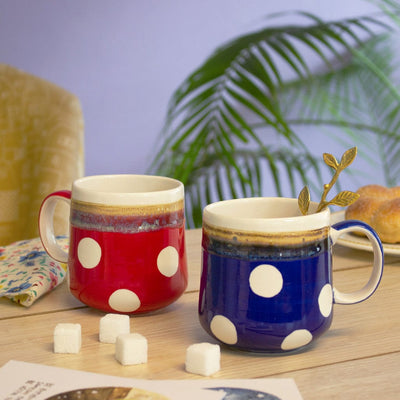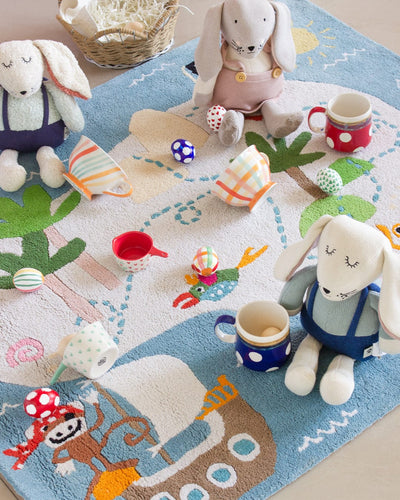The Delights of Distraction No.62
Table of contents
For lifestyle stores in India (or all stores really) - Diwali is our biggest season. We spend months gearing up for it, in anticipation that the celebratory gifting nature of the festival will make up for the dismal months before it. This year, we’re doing a little revamping of our gift boxes, packages - and our greeting cards.
Now greeting cards are a tricky business: people generally want to attach cards to their gifts (especially the expensive, thoughtful ones - while strategically forgetting to attach them to re-gifts or soured wine bottles), so the lucky recipient knows who they’re indebted to. But other then filling in “To” and “From”, most gift-givers aren’t sure what to say in between. Sometimes they hand the pen to our store manager and say, “Just write something nice…”
Most greetings cards are a feelings factory full of clichés, someone else’s brain debris. Most cards have too much sap, too little finesse, or play on stereotypes. Mother’s Day cards are either a play on perceived female insecurities, that they consume (eat, drink) or talk too much. Or, the card copy is overwrought with a description of self-sacrificial maternal nurturing, which is so 1980s. Birthday cards are eye-rolling schtick around age-ism, how terrible growing old must feel and the one’s for women are particularly sexist, for example: “Celebrate your birthday like a real woman: Drink wine and bitch!”
So what are we supposed to write in a generic greeting card? The truth?
Happy Father’s Day! Sorry the financial burden of bringing me up didn’t have a 200% ROI.
Happy Mother’s Day! Hope that motherhood was marginally less painful than labour - from your least disappointing child.
Hmm, perhaps not.
The point of a greeting card is to let people know you care. The sender took time out of their day to go through the steps: procurement, hand writing, present-picking. The effort. That’s where the care is. Thinking about other people is a ritual worth keeping. Even if you don’t know what to say. Because sometimes, the most basic hand-signed “Season’s Greetings” and “Get well soon” can be the most eloquent way to tell someone they’re in your thoughts.
If you have any ideas on what we could put on our greeting cards that doesn’t step on too many toes without being dog-earedly generic - do write in and tell us! We’re eager for any feedback on that front.
“The best moments in reading are when you come across something – a thought, a feeling, a way of looking at things – which you had thought special and particular to you. Now here it is, set down by someone else, a person you have never met, someone even who is long dead. And it is as if a hand has come out and taken yours."
- Alan Bennett
To read: A beautiful, creative meditation on the age-old question, “What happens after we die?”
A lovely reminder to not take expertise or success at face value. There is always struggle behind the façade of a perfect story. “When someone is viewed as more extraordinary than they are, you’re more likely to overvalue their opinion on things they have no special talent in. Like a successful hedge fund manager’s political views, or a politician’s investment advice. Only when you get to know someone well do you realize the best you can do in life is to become an expert at some things while remaining inept at others – and that’s if you’re good.”
A simple, illuminating argument about how our brains are evolutionarily hard-wired for stress and anxiety as a defense mechanism for escaping danger. As such, the “good” emotions don’t come as naturally, we must actively cultivate them and make it a practice to feel them regularly. After reading, we both realized we’ve spent most of our time and energy mitigating “negative” emotions vs. actively cultivating those better feeling ones.
To joy scroll: Spanish photographers Anna Devís and Daniel Rueda cleverly use landscapes and architectural elements to create minimalist and fun portraits of themselves.
To ponder: We have covered this earlier, but it bears repeating, especially for those who are mourning their loved ones, A response to the COVID-19 pandemic, The ARTISTS’ GRIEF DECK is a set of 60 medium format ‘flashcards’ that are individually designed by artists, sometimes in collaboration with grief workers. One side displays an original artwork, created by artists from around the world responding to our open call, and on the reverse is a ‘grieving prompt.’ These are memorial and processual actions that give the individual something to do – a gesture, a tiny performance, a movement, an act of mindfulness – in memoriam for someone or something whose loss they are grieving. In addition to serving as an archive of the printed deck, this project website also serves as an expanding repository for grief-inspired artwork and healing, transformative action.” Even if you’re not grieving, it’s worth taking 5 minutes to explore the cards and the words that accompany them.
To watch: In 1960, pioneering American artists Sol LeWitt and Eva Hesse met for the first time and became close friends. In 1965, Eva found herself facing a creative block during a period of self-doubt, and told Sol of her frustrating predicament. Sol replied with this letter: read and acted out with fierce, raw talent by Benedict Cumberbatch, Send this to anyone who feels stuck in rut or creatively blocked, it’s a banger!
To listen: Thanks to Rob Dawson who cobbled this together from the Internet Archive and with a simple front-end interface, which lets you select themed radio stations patched together from content from The Old Times, spanning action stories, horror stories, scifi, suspense, comedy and drama. It’s beautiful time travel, if nothing else, but also takes you back to an era (an era,we have never experienced – we are not THAT old) in which the radio waves were full of stories .Go lose yourself in this, it’s so good!
To eat: Zen teacher Thich Nhat Hanh’s Mindfulness Essentials series of small “How to” books are a delightful series that inculcate a sense of slowness and gratitude to day-to-day life - from love to work and play. One of the books, How to Eat, contains short meditations on connecting with the Earth, enjoying your food and eating with others. Below are three excerpts.
Wait without waiting — Standing in line at grocery store or a restaurant, or waiting for the time to eat, we don’t need to waste our time. We don’t need to “wait” for one second. Instead, we can enjoy breathing in and out for our nourishment and healing. We can use that time to notice that we will soon be able to have food, and we can be happy and grateful during that time. Instead of waiting, we can generate joy.
Our ancestors are in the soil — In the soil are many people who have died, have been transformed, and have become part of the soil. Maybe in this mouthful of rice are also the bones of hundreds of generations as well as many leaves, worms and animal’s bones. Maybe in a previous life you had been there and died there, and your own bones have disintegrated in that land. During the time of eating, your practice is to look deeply into that grain of rice and enjoy all that has gone into its creation. There are so many things to enjoy and to discover in each bite.
Eating and smiling — Sitting at the table and eating with other people is a chance to offer an authentic smile of friendship and understanding. The most important part of the practice is to look at each person and smile. Upon finishing your meal, take a few moments to notice that you have finished, that your bowl is now empty, and your hunger is satisfied. This is another opportunity to smile and be grateful that you have had this nourishing food to eat, supporting you on the path of love and understanding.
To end:
By Carrie Law Morgan Figgs (in 1921)
1
A moment of pleasure,
An hour of pain,
A day of sunshine,
A week of rain,
A fortnight of peace,
A month of strife,
These taken together
Make up life.
2
One real friend
To a dozen foes,
Two open gates,
’Gainst twenty that’s closed,
Prosperity’s chair,
Then adversity’s knife;
These my friends
Make up life.
3
At daybreak a blossom,
At noontime a rose,
At twilight ’tis withered,
At evening ’tis closed.
The din of confusion,
The strain of the fife,
These with other things
Make up life.
4
A smile, then a tear,
Like a mystic pearl,
A pause, then a rush
Into the mad whirl,
A kiss, then a stab
From a traitor’s knife;
I think that you’ll agree with me,
That this life.
See you next week,
Viv and Ami







Leave a comment